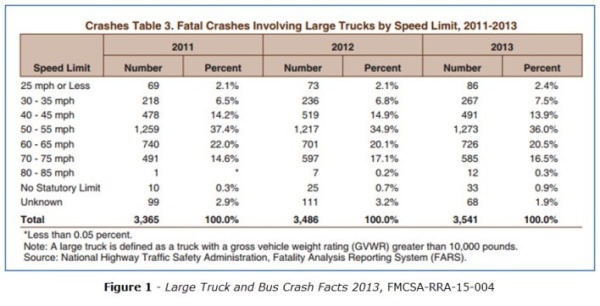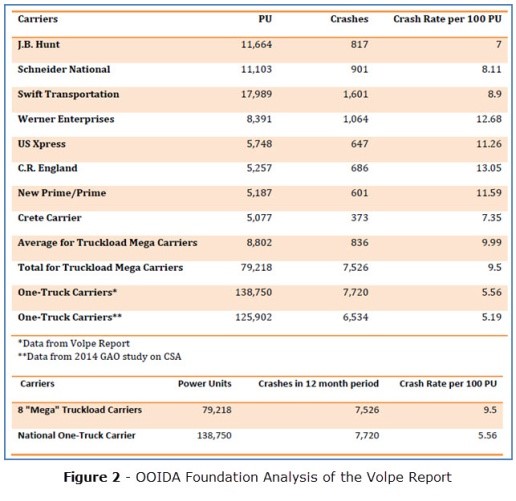NMA and OOIDA Dispute Split-Speed Limit Safety Claims by American Trucking Associations
The National Motorists Association (NMA) and Owner-Operator Independent Driver Association (OOIDA) issued a joint statement questioning claims made by the American Trucking Associations (ATA) that all trucks need speed limiters programmed to 65 mph. The ATA has called upon the U.S. Department of Transportation and the Federal Motor Carrier Safety Administration (FMSCA) to not only cap the speed of large trucks, but to also reduce speed limits for all traffic.
“The ATA is searching for a solution to a problem that doesn’t exist,” noted NMA President Gary Biller. “They want to turn back the clock from today’s speed limits at a time when U.S. highways are statistically safer than at any time in the past. Much safer, in fact, than when the federal government regulated the maximum speed of all vehicles to 55 mph between 1974 and 1995. It makes you wonder why.”
In an April 2015 study, the FMCSA reported (see Figure 1) that from 2011 to 2013, 80 percent of fatal crashes involving large trucks occurred at speed limits posted no higher than 65 mph. Nearly 60 percent of the crashes were on roads posted at 55 mph or lower.
The ATA has been lobbying for speed limiters on trucks for several years. In comments presented to federal transportation officials in March 2007, OOIDA opposed the ATA call for large truck speed limiters. The advocates for independent drivers testified eight years ago that, “Twenty-four states have legally set their approved maximum speed limits at or above 70 mph on roads designed for the higher rate of speed; ten of these have approved limits of 75 mph for certain roads. Further these states have determined that it is in the best interest of highway safety to allow all vehicles, including heavy-duty trucks, to travel at these speeds.”
FMCSA statistics support OOIDA’s statement that trucks keeping pace with surrounding traffic are at less risk of crash. The information in Figure 2 was formulated with data from FMCSA’s Compliance, Safety, and Accountability program and from a January 2013 study by the John A. Volpe Transportation Systems Center, “Financial Responsibility Requirements for Commercial Motor Vehicles.” The analysis shows that over a recent 12-month period, the crash rate was 71 percent higher (9.5 vs. 5.56) for large-fleet truck firms than for one-truck carriers. The large fleets typically operated with speed limiters, the independent truckers without.


The ATA and the National Highway Traffic Safety Administration (NHTSA) have also pointed to tire speed ratings as justification to set lower speed limits for large trucks. NHTSA Administrator Mark Rosekind acknowledged that no one has died because of the discrepancy between tire speeds and truck speed limits. His comments followed an investigation by his agency that found tire under-inflation and/or heavy loads were at fault for the tire failures.
Biller observed, “Larger trucking firms are already speed-limiting their fleets and yet it is the trucks without artificial limiters that are much safer on the road. So why do the big guys want to regulate everyone, cars and one-truck or small fleet carriers alike, down to their less-safe level?”
Todd Spencer, OOIDA Executive Vice President, said, “While the big carrier executives who are proponents of speed limiters talk about improved safety, when you talk to professional drivers, the first thing they mention is how speed limiters compromise safety and increase risk of accidents between trucks and cars.”
Spencer added, “When trucks operate slower they burn less fuel. However the trade-off is the driver’s time. Since virtually all over-the-road carriers pay only for miles driven and nothing for the driver’s time, it’s easy to see who wins and who loses economically. Nearly all of the big truckload motor carriers work tirelessly to grow regulations and mandates that they claim will improve safety. However crash numbers show just the opposite.”
OOIDA sent a letter and supplemental document to FMCSA and NHTSA last week urging the agencies to review relevant research before implementing a rule.



